Folding flowers 1
Problem
Below is a picture of an unfolded piece of paper.
Can you work out what shape is made when it's folded up using the crease pattern shown?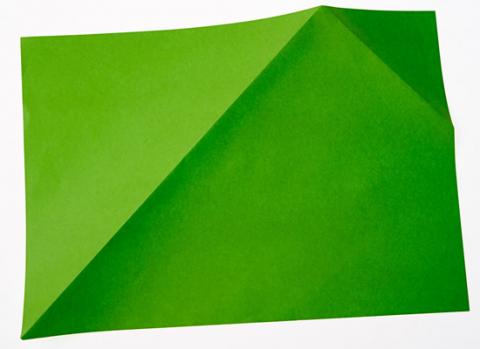
Click below if you want to see the shape.
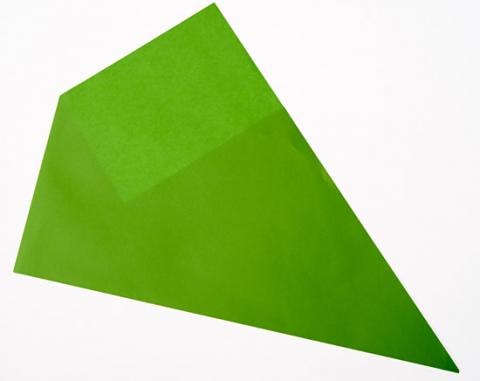
Can you make one of these shapes with a new piece of paper?
Now make several of the same shape from A4, A5 and A6 pieces of paper in two contrasting colours.
Challenge 1
Take a large and small shape made from your first colour and a medium shape made from your second colour.
Make a pattern from your shapes, by laying them on top of each other, that fits both of these rules:
You must be able to see at least part of each shape.
All three shapes must fit inside the perimeter (outline) of the largest shape.
Challenge 2
Use a new large, medium and small shape to recreate the same pattern but in opposite colours from Challenge 1.
Place these two patterns next to each other and continue to fold and add to your pattern until you've made a flower.
Can you predict how many of your original Challenge 1 pattern you will need?
We would love to see photos of your flowers!
If you enjoyed these challenges, why not have a go at Folding Flowers 2?
You may be interested in the other problems in our Puzzling with Paper Feature.
Getting Started
What order do you think the folds were made in?
How could we check what we've done so far?
Student Solutions
We had a number of good pieces of work sent in, in the form of pictures. Sam and Millie from Barnby Road Academy wrote to say:
First we made the shapes out of the different coloured paper and then we sorted them into the groups of three: large yellow, medium blue and small yellow or the opposite way round. We sorted the groups so that you can see every shape by putting them in the middle of the larger shape.
After that we sorted the groups into a flower. The groups are the petals and we used the original pattern (see second line) four times:
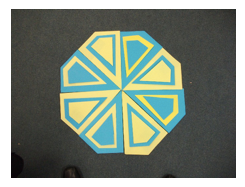
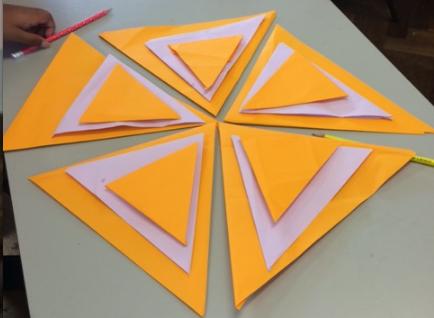
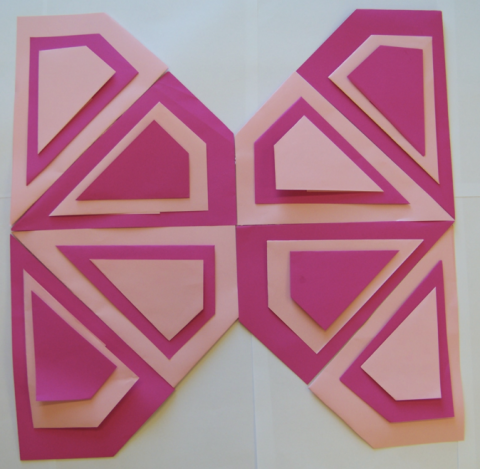
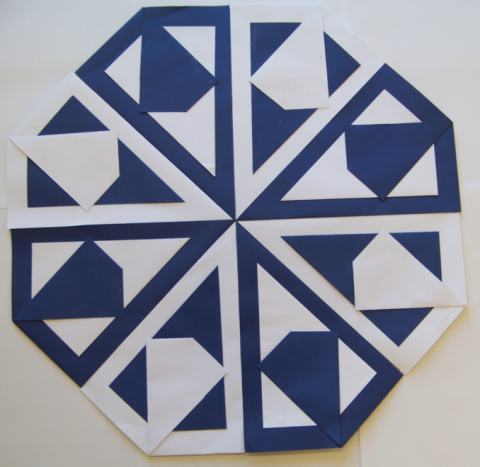

Zakary, Vidura and Alex and Jack, and Emily from Fernwood Primary and Nursery sent in these:
Hello and welcome to our nrich activity of Folding Flowers 1! We have our solutions! We have come to a decision that there are actually infinite solutions, due to the fact that you can actually move the petals any distance from each other. We really enjoyed solving this problem!
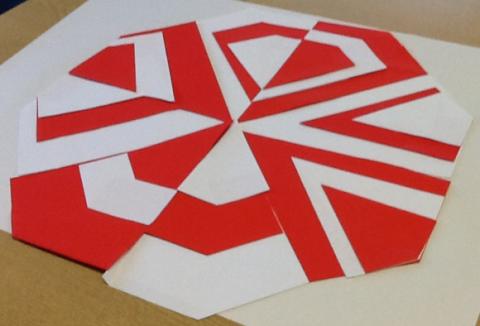
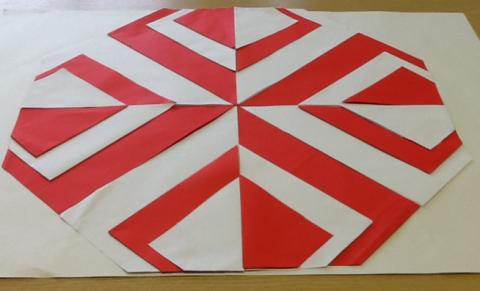
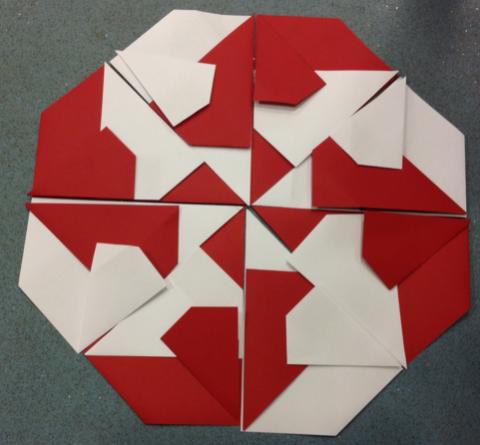
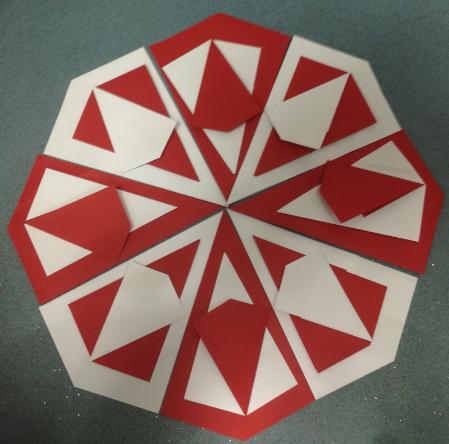
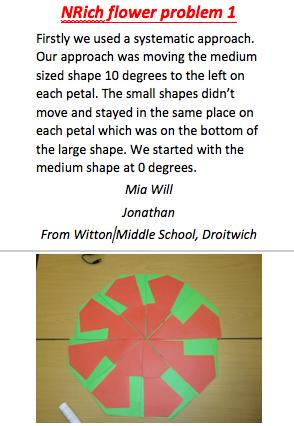
Teachers' Resources
Why do this problem?
This problem provides the opportunity to develop visualisation skills. It requires children to solve the conundrum of what happens in between, when they are given a picture of a crease pattern and the finally-folded shape.
Possible approach
Just share/project/show the picture of the crease pattern first and allow children to talk about what shape they think it might make when re-folded.Then share the picture of the ready folded shape (or a real one you made earlier!) and ask children to talk about what they think now.
Give each pair of children a piece of A-sized paper (A4 is easier for smaller hands or beginner folders, but any A size will work) and ask them to try and recreate the shape. They can of course un-do their folds at any point in order to check whether their crease pattern matches the one in the picture.
Here are some examples of flowers made in one school, which you may or may not wish to share with the children:
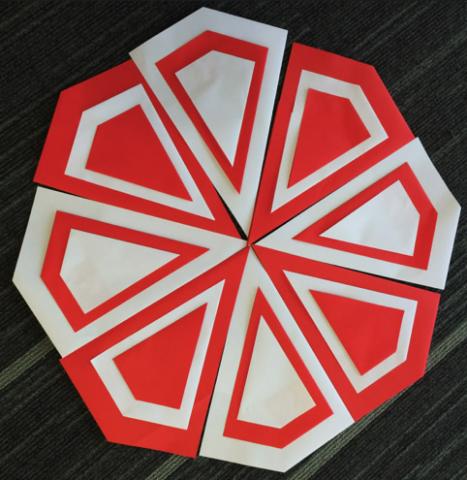
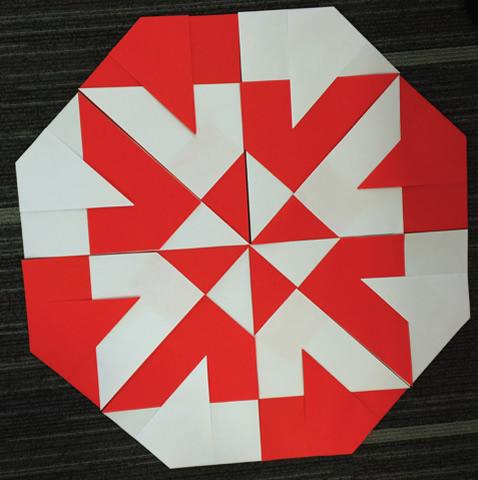
Key questions
What do you notice about the different types of fold on the crease pattern?What order do you think the folds were made in?
How could we check what we've done so far?
Possible extension
Pairs given one piece of A-sized paper could take it in turns to give an instruction whilst their partner carries out the fold. The instructor must do this with their hands on their hand, (no handling of the paper or pointing is allowed) in order to develop the accuracy of their descriptive and positional language. Children might be given larger A-sized paper (A3 for example) to act
as a model for the rest of the class, as folding with larger paper is more difficult and requires more accuracy.Some learners might like to have a go at Folding Flowers 2.
